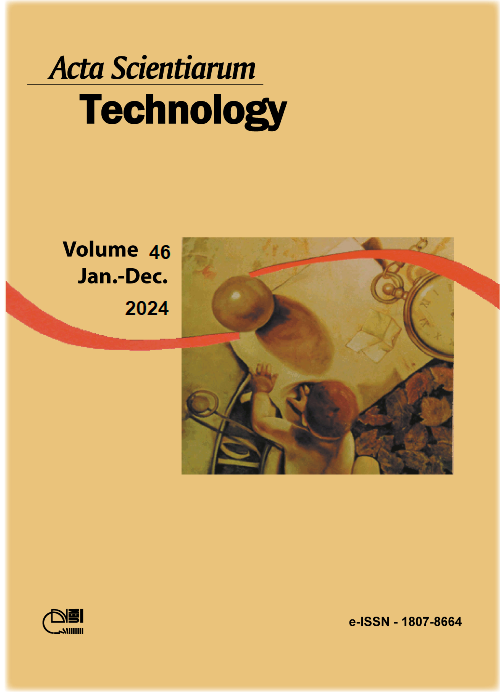Effects of cooling type on mechanical properties of concrete produced with slag-modified cement exposed to high temperatures
DOI:
https://doi.org/10.4025/actascitechnol.v46i1.66726Palavras-chave:
concrete; slag-modified cement; fire; strength; stiffness; cooling procedures.Resumo
Effects of different cooling methods on residual mechanical properties of normal-strength concretes produced with slag-modified cements were not reported in previous literature. Therefore, a (2 x 2 x 4) factorial experiment was carried out in the present study to investigate the compressive strength and elastic modulus of slag-modified cement concretes with different strength levels (characteristic compressive strength of 20 and 30 MPa) subjected to different maximum temperatures (200, 400, 600, or 800ºC) and cooling procedures (slow or fast cooling). According to analyses of variance (ANOVA), air-cooled specimens showed higher residual mechanical properties. Higher residual elastic modulus was observed in concretes with higher initial strength, whereas residual strength was only affected by initial strength for higher temperatures. Effects of different cooling methods were more pronounced in slag-modified concretes than in concretes produced with ordinary Portland cement, especially for temperature up to 400ºC. Since slag-modified concretes have lower calcium hydroxide content, volume expansion and cracking propagation due to lime rehydration during slow cooling were mitigated, leading to higher post-fire mechanical properties. In contrast, these types of concrete exhibited significant temperature difference along their cross-section when fast cooling was used, so that a substantial thermal shock caused limited post-fire mechanical properties.
Downloads
Downloads
Publicado
Como Citar
Edição
Seção
Licença
DECLARAÇíO DE ORIGINALIDADE E DIREITOS AUTORAIS
Declaro que o presente artigo é original, não tendo sido submetido í publicação em qualquer outro periódico nacional ou internacional, quer seja em parte ou em sua totalidade.
Os direitos autorais pertencem exclusivamente aos autores. Os direitos de licenciamento utilizados pelo periódico é a licença Creative Commons Attribution 4.0 (CC BY 4.0): são permitidos o compartilhamento (cópia e distribuição do material em qualqer meio ou formato) e adaptação (remix, transformação e criação de material a partir do conteúdo assim licenciado para quaisquer fins, inclusive comerciais.
Recomenda-se a leitura desse link para maiores informações sobre o tema: fornecimento de créditos e referências de forma correta, entre outros detalhes cruciais para uso adequado do material licenciado.



















